The VR Glossary is packed with helpful virtual reality terminology to help newbies or seasoned pros learn the lingo of this emerging technology. We help you explore this new vocabulary with our helpful virtual reality inspired lists:
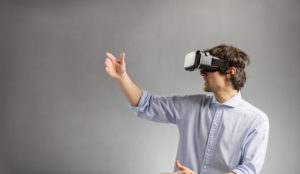
A/ B/ C/ D/ E/ F/ G/ H/ I/ J/ K/ L/ M/ N/ O/ P/ Q/ R/ S/ T/ U/ V/ W/ X/ Y/ Z/
Active presence
(also known as "hand presence")
an immersive state achieved as a result of using a hand-held tool/device (peripheral) within a VR experience.
Agency
(see also: "local agency" and "global agency")
The ability of an entity (a person or other unit) to act in and influence an artificial environment.
Agency contributes significantly to enabling a state of presence in the experiencer.
As Will Storr states in his book Selfie, it is a basic human need to engage with the world around us and to want to assert our will:
People simply cannot prevent themselves from being the cause of effects. Psychologists describe the "effect motive" - as "almost as basic a need as food and water".
Analytics
the information resulting from the systematic analysis of both the events within the artificial reality and the device used to generate the artificial reality.
Analytical metrics of virtual reality are therefore often divided into two groups:
Scene metrics:
- Event zones
- View heatmaps
- User paths
- Item Engagement
Device metrics:
- Performance
- Teleportation events
- User comfort
- Hardware data
- HMD collision with the world
- Controller collision with the world
- Keystrokes
Augmented Reality (AR)
In augmented reality (AR), the visible natural world is overlaid with a layer of digital content.
Authoritative intent
the extent to which the human author predetermines the possible narrative or equips the system with the ability to creatively adapt to the experiencer.
Avatar
a virtual representation of the user within the virtual world.
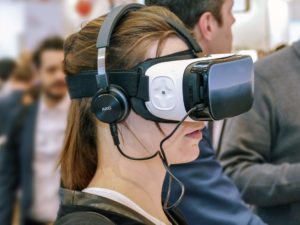
View
the direction in which the experiencer is looking.
gaze-activated content
when the content, for example the behavior of the actors within a scene or the narrative, is directly influenced by the gaze of the experiencer.

CAVE
A CAVE (cave automatic virtual environment) is a virtual reality environment,
which consists of three to six walls that form a room-sized cube.
Projectors show a virtual world on the inside walls of the CAVE and are then controlled by the movement of a user out of the CAVE.
Cockpit
a virtual anchor that is attached to the user's view and helps to ground them in the virtual world, for example a fighter jet cockpit.
Research has shown that grounding the user through virtual anchors can curb the symptoms of virtual reality sickness.
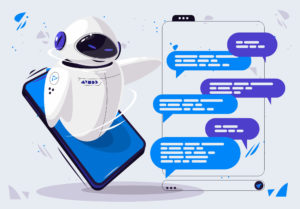
Data glove
an interactive device - often similar to a glove,
that is worn on the hand - which is connected to a computer system
and enables fine control of movements in virtual reality.
Digital Farming
People need living space. The challenge, however, is to position yourself in good time for the moment when a real estate transaction is actually imminent for the prospective buyer or owner.
This is precisely the aim of so-called farming.
Digital measures are focused for the estate agency.
The reach of digital channels for customer acquisition is utilized. Marketing campaigns, search engine optimization and the use of
of virtual reality methods for real estate agents increase visibility for
visibility for acquiring new customers.
Remote real estate auctions are increasingly in demand.
Prospective property buyers can bid live without being on site, which increases the competitive pressure and is intended to achieve better sales prices.
Digital home staging
also known as "digital home staging":
Instead of looking at empty rooms, your customers see tastefully furnished objects that are appealing and stimulate the imagination.
The highlight: By using virtual reality methods, real estate agents do not have to furnish the property with furniture first.
By using VR, you can give your customers a better impression of your property and thus greatly increase the chances of a sale.

Duck test
a colloquial term for a method of testing whether a user has reached a state of presence by observing their behavior,
behavior when threatened by a virtual object.
For example, if the user is hit in the head with a baseball bat, would they duck? If the answer is "yes", then the conclusion is that a state of presence has been reached because the user considers the threat - in this case the bat - to be real and tries to avoid it.
Although research shows that the test is a valid way to test presence, it comes with some risks. The developer's decision to incorporate an artificial threat into the environment or narrative to test presence could unintentionally disrupt presence if the subject realizes that it is not a realistic threat
emergent narrative
when non-player characters (NPCs) have complete autonomy in an interactive narrative.
Experience
an intense, personal experience that has a profound effect on the inner life of the person experiencing it.
An experience typically describes a unique, exciting and profound event, but it can be either positive or negative.
It often involves the experiencer embodying the experience on some level.
Experience Manager
(also known as 'story generator')
a generalization of the "Drama Manager" concept presented by Joe Bates in Virtual Reality,
Art and Entertainment.
Experiencer
Experiencer is another word for "user" or "player".
Eye tracking
The ability of a head-mounted display (HMD) to recognize the position of the user's eyes in relation to their head.
Eye tracking is particularly useful for VR analytics where the developer wants to better understand what content the user is focusing on in a particular scene or view.
Elementary theory of presence
The 'Elemental Theory of Presence' is a useful model by Kent Bye to describe the qualitative elements of a virtual reality experience.

flow
(also known as: being in the 'zone')
the mental state in which an experiencer is so involved in the process of an activity that nothing else seems to matter
Locomotion
refers to the process of moving from one place to another.
This usually refers to movement within the virtual environment, for example how an avatar navigates in the virtual world, but can also refer to movement outside the virtual environment. How the user navigates in the real world while in a virtual experience.
The mechanics of locomotion in virtual reality can be divided into three main categories:
- Locomotion
- Teleportation
- Transportation
- Locomotion
Ambulatory locomotion methods attempt to simulate natural ways of moving through a virtual space (without the aid of transportation) in real time. This can include both types of navigation that we would associate with natural human behavior: Walking, crawling, climbing, as well as less natural ones - flying, swinging.
These modes of transportation can be further divided into two types:
- Kinetic locomotion mechanics
Mechanics that require the output of significant kinetic energy through physical movement of the body to navigate the avatar through the virtual world.
The primary benefit of this type of mechanic is greater immersion as the body is involved - an important contribution to creating a state of embodied presence.
Examples of this are
Use of the entire body
- Walking around in a predefined environment, e.g. in a room-based VR
or in VR parks such as "The Void".
A technique called "redirected walking" can be used to trick subjects into believing they are traversing a seemingly endless virtual world when in fact they are not.
- Use of a specially developed movement platform such as the Virtuix Omni.
Use of handheld controllers
- Point and click: The experimenter points to the place where they want to move and is then moved towards this target step by step and in real time (often at a very low speed).
- Grab: Using a grappling hook or similar tool to define a point in the virtual world. This point can then be used as a target or as an anchor for traversing other areas, for example when swinging through trees.
- Arm pumps to mirror the movement of the jogging.
- Hiking: Performing a skiing motion with one or two arms to propel the avatar forward.
- Grab and pull: this is a technique where the experimenter stretches out their arms and grabs the virtual world to pull themselves forward. This is a good way to simulate climbing.
Only with the HMD:
- Head bobbing: The up and down movement of the head mirrors the movement of jogging.
-
Artificial
locomotion mechanics
Mechanics in which only buttons, joysticks or D-pads are used to navigate the avatar through the virtual world.
-
Teleportation
Teleportation methods attempt to navigate the user from one point to another without traversing the physical space between the points. Once the action is performed, the movement is instantaneous.
Examples of kinetic and artificial
mechanics are:
- Point and click: The experimenter points to the place where he wants to move and then immediately materializes at this point.
- Scouting: The experimenter can use a device (usually thrown), which then sends a view of the new location back to the experimenter. The experimenter can then decide whether to teleport to this location or not.
- Tunneling: The experimenter can temporarily block their head movement before a window is placed over the current view.
The movement in the window is then controlled using an artificial movement method, for example a joystick.
- Menu selection: the experimenter uses a menu interface to select a target from a list.
- Orientation: the user uses a map interface to select a destination.
Crosshairs
The crosshair is a visual aid for the user to target objects in the virtual reality environment with their gaze.
The style of the crosshair can vary. Common designs show the crosshair as a simple dot or a crosshair.

Gesture
A form of non-verbal communication through the body - typically the hands or the head - which, when tracked by a motion sensor camera connected to a computer, can be interpreted as movement and mirrored in virtual reality.
The use of gestures in virtual reality gives the user the opportunity to physically influence the experience, for example, a swing of the arm by an avatar could be
could be mirrored in the virtual world as part of a boxing match.
Gestures that are directly reflected in the virtual world also help to reinforce a sense of agency and contribute directly to active presence and embodied presence.
Ghost story
avirtual reality (VR) experience in which the user is a disembodied observer in an unfolding narrative - as if watching a movie - but is unable to make changes to the world or speak to the characters.
global agency
(see also: 'agency')
Interactivity, where the actions of the experiencer can have some kind of result or consequence for the narrative.
Agency contributes significantly to enabling a state of presence in the Experiencer.
Mixed reality (MR)
Mixed reality (MR) is similar to augmented reality (AR), except that virtual objects are integrated into the natural world.
For example, a virtual ball under your desk would not be visible to you unless you bent down to look at it.
Poison Berry Theory:
The "Poison Berry" theory is an evolutionary idea behind the virtual reality disease.
It states that experiencing sensations that are different than expected, in combination with dizziness, are symptoms associated with intoxication.
From an evolutionary perspective, people who are poisoned benefit from it,
vomiting quickly.
Valid actions
the actions that an experimenter can perform that can lead to changes in perception or in the environment.
Yaw
Rotation around the vertical (y) axis
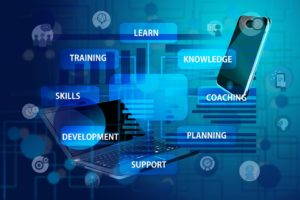
Haptics
Haptic technology simulates the sense of touch through the sensation of pressure
(normally on the hands via a glove).
This helps to support the ability to act by allowing the user to control virtual objects or feel physical forces within the virtual environment. Haptics are an essential component of peripheral devices.
(HMD) Head-mounted display
a pair of glasses or a helmet with tiny monitors in front of each eye to generate images that the wearer sees as three-dimensional.
Heatmap
a graphical representation of data relating to the user's gaze during a virtual reality (VR) experience.
Gaze heat maps are a type of analysis. They use a color coding system from hot (red) to cold (blue/green) to represent areas of interest within the experience.
Hotspot
an interactive point within the artificial experience that reveals further content or options.
Hotspots can be animated and are often displayed as a glowing sphere.
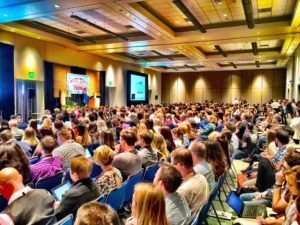
Immersion
a psychological feeling of being in a virtual environment.
interactive narrative
(also known as: 'responsive narrative')
a form of digital interactive experience in which the experiencers create or influence a dramatic action through their actions.
Intelligent building
so-called "smart buildings" for networking private living spaces with intelligent smart home technologies.
Clients of building contractors and real estate agents are increasingly demanding properties that are equipped with intelligent heating or lighting systems and therefore offer greater efficiency and comfort. Innovative real estate agents should address this topic promptly, as customer requirements are increasing.
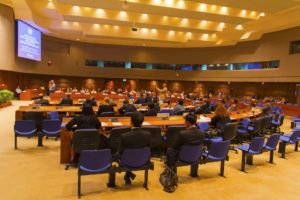
Latency time
the time-delay or delay between the activation of a process (change of input by the experiencer) and its completion (the visual effect)
High latency can lead to a detached experience and also contribute to motion sickness / dizziness.
local agency
(see also: 'agency')
Interactivity that spices up the experience but is unlikely to take it down a different narrative path
Agency contributes significantly to enabling a state of presence in the experiencer.
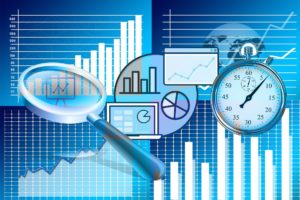
Collision detection
Detection that virtual objects have overlapped, which sometimes triggers haptic or visual feedback for the user.
Cognition embodied
embodied cognition
the idea that cognition is not limited to the brain, but is distributed throughout the entire body.
Head tracking
the possibility for a head-mounted display (HMD) to monitor the position and orientation of the subject's head through tracking.

Tenant matching
an apartment search or a tenant search using a smartphone.
The basic data of a rental property and the creation of a desired tenant profile are the focus of tenant matching. Agents receive a clear list of candidates, sorted according to how well they match the criteria. This makes it possible to broker properties more efficiently.
Non-compliant users
a user who does not interact with a responsive narrative.
Non-player characters (NPCs)
computer-controlled characters
Inclination (pitch)
Rotation around the horizontal (x) axis
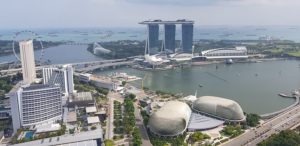
Occlusion
obscuring or masking an object by positioning other objects in the experimenter's line of sight.
Location illusion (PI)
the feeling of existing in one place.
The illusion of place (PI) was proposed by Mel Slater as one of two illusions that contribute to a sense of presence. It is often discussed in conjunction with the plausibility illusion (Psi).

Doll's house view
an external top-down view of the entire artificial space, allowing the designer to make global decisions about its composition and enable rapid proto-typing. and enable rapid proto-typing.
The doll's house view can also be combined with a first-person perspective to allow the user to stay in the room they are actively
actively manipulating without having to switch between different modes and perspectives when designing the room.
Presence embodied
Recognize the existence of your body within a VR virtual reality experience.
Peripheral device
A device that helps to enhance a virtual reality experience by enabling greater immersion in the virtual world.
The most common VR peripherals are gloves or controllers, such as the Oculus Touch, which are designed to mirror the user's innate movements and enable a better active presence.
Plausibility illusion (Psi)
the assumption that the scenario presented will actually occur.
Another way of imagining this illusion is the automatic and quick reaction of the experiencer to the important question: Is this really happening? If the answer is "no", the illusion is broken.
The illusion of plausibility (Psi) was proposed by Mel Slater as one of two illusions that contribute to a sense of presence. It is often discussed in conjunction with the illusion of place (Psi).
Position-based audio
Audio that is triggered based on the position of the headset.
In a busy scene, for example, the user could choose which conversation they want to listen to depending on where they are looking.
Presence (also known as: 'telepresence')
(see also: active presence, embodied presence, emotional presence and social presence).
a sense of being in and of the virtual world, and ignoring the distractions of the physical world.
PropTech company
Modernizers of the real estate industry and its associated services and processes.
For example, cloud-based broker software as a driver of digitalization and automation
of the real estate industry.

Quantum story theory
a principle for creating an experience story in a virtual world,
proposed by Curtis Hickman, Chief Creative Officer at "The Void"
and further developed by Tracy Hickman, Director of Story Development.
The theory postulates that virtual reality facilitates the transition from traditional 'storytelling' to 'story experience', where only the experiencer can determine how the story unfolds. The "quantum" element is an allusion to "quantum superposition" (a key principle of quantum mechanics), which in simple terms states that while we do not know what state an object is in, it is actually in all possible states at the same time unless we look.
quillustration
Create dynamic, 3D animations and illustrations in virtual reality with the Oculus Quill.
Using a handheld controller, the artist can select different brushes and colors and then move their hands through the 3D space,
to create the art.
The activity is best enjoyed in real time as the artist creates the 3D art live, allowing the audience - both inside and outside the VR environment - to see the creations come to life stroke by stroke around them.
The term Quillustration could also be applied to similar devices such as the Tilt Brush.
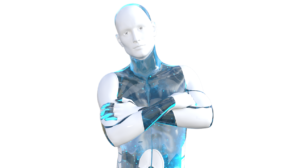
Reaction-as-if-real (RAIR):
a condition that describes when a user reacts to avirtual reality
as if it were real.
responsive narrative: (also known as: "living stories" or
"interactive narrative").
Virtual reality narratives that adapt based on the interaction of the experiencer,
often controlled by a form of AI.
Room size:
A design paradigm that allows the user to move freely in a room-sized environment while participating in a virtual reality (VR) experience.
Through the use of kinetic movement mechanisms (in the perambulation category), the user's physical movements are mirrored in the virtual world and contribute to a greater sense of immersion as the body is directly involved - an important contribution to creating a state of embodied presence.
The term room-scale is often used to distinguish other types of virtual reality experiences, such as a self-contained environment of a VR room or seated or standing VR in which the user remains stationary.

Field of view (FOV)
is the view that is visible to the experimenter as he turns his head from a fixed
head from a fixed body position.
The average human field of vision is around 200 degrees.
Game transfer phenomena (GTM)
are the phenomena that occur when elements of virtual reality - primarily from video games - are associated with elements of real life and subsequently trigger thoughts, sensations and/or behavior in the experiencers/players
Game transmission phenomena can be divided into two main categories:
Involuntary experiences
Dreams
Automatic thoughts
Change in sensory perception
Automatic behaviors
Intentional integrations:
Use of video games as interacting media or tools
Modeling of game pieces and game events
Daydreaming about video games
Butterfly effect system
The butterfly effect system is a narrative mechanism for controlling complex narrative structures in which the actions of the experiencer can have a direct influence on how the narrative unfolds.
The term "butterfly effect" comes from chaos theory, where the American mathematician Edward Norton Lorenz used it as a metaphor to describe the phenomenon in which a small change in circumstances can cause a big change in outcome.
The idea has since been adopted by computer games such as Until Dawn and Life Is Strange, where a literal butterfly symbol was used to signal that a player action had a direct impact on the game's narrative arc.
Player modeling
refers to the process of learning a model of the individual differences of the experiencer.
self-regulating behavior
actively make decisions in a scene and also take time into account, which in turn makes the passage of time seem longer.
Sensorimotor contingencies
Sensorimotor contingencies (SCs) refer to the actions we know to perform in order to perceive.
Social presence
the choice to actively engage with others within a VR experience.

Overview effect
a cognitive shift in consciousness and a new sense of perspective, triggered by viewing the earth from orbit.
The experience should evoke in the experiencer a sense of appreciation for the fragility of the earth.
The term was used to describe the Google Earth VR experience, which allows the experiencer to traverse the globe at different scales.
Redirected walking
is the name for a technique used to expand the possible size of a virtual reality environment by imperceptibly rotating the virtual scene without the user noticing.

Virtual reality (VR)
Virtual reality (VR ) transports the user to a completely different place. Regardless of whether this place was generated by a computer or recorded on video, it completely blocks out the natural surroundings of the person experiencing it.
Virtual reality disease
(also known as "motion sickness" or "simulation sickness")
is the feeling of general discomfort caused by the experience of virtual reality.
Symptoms may include: Headaches, nausea, vomiting, drowsiness and disorientation. Research shows that discomfort - to which virtual reality sickness contributes - is a major barrier to engagement with virtual reality. Therefore, much time has been invested in developing technological innovations to reduce and eliminate virtual reality sickness.
The "Poison Berry Theory" is an evolutionary idea behind the virtual reality disease.
VREP - VirtualReality Empowerment Program
The training program to master relevant tools for the creation of a marketable training and coaching offer in VirtualReality.
Forms:
8-week online course program
3-day compact program

Signposts (signposting)
Environment hints with the additional purpose of helping the user to interpret the virtual environment.
WebVR
WebVR is an emerging technology that aims to present virtual reality content in traditional web browsing interfaces.
The experience is provided via a JavaScript API that offers support for virtual reality devices. A specification in progress - written by pioneering developers from Google and Mozilla - can be found on the Github of the World Wide Web Consortium (W3C).
The long-term goal of WebVR is not only to democratize virtual reality content, but it also provides a great way to create quick VR prototypes and experiments before investing in full production with tools like Unreal Engine and Unity.

Timer
Any external or environmental cue that synchronizes an organism's biological rhythms with the 24-hour light/dark cycle and the 12-month cycle
of the earth.
? How my team and I support your path as an entrepreneur in the metaverse.
➕ Location consulting
- Recording and analysis of the current situation
- Positioning your company in the metaverse
- Optimization for VR community development
➕ VR workshops and training courses
✔️ Find out more about the VREP Virtual Reality Empowerment Compact program below.
Would you like to work with me and my team on your strategy for the successful development of a metaverse strategy or take advantage of the opportunities offered by the use of virtual reality for your company? Contact me
So share your thoughts and connect with us on LinkedIN
Discover our contributions on our Tempulse.Global Youtube Channel
